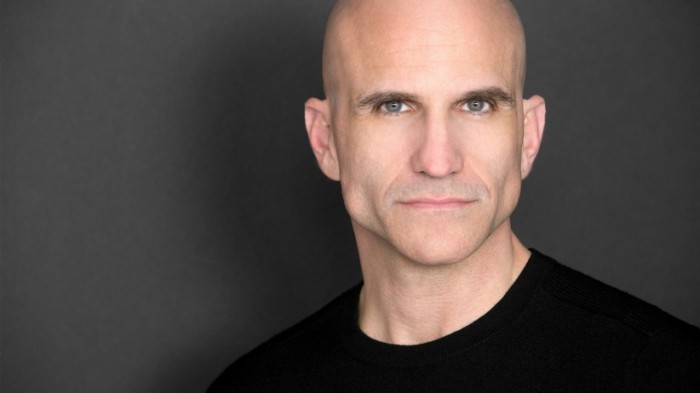
10 Public Speaking Lessons From Michael Port
Want to inspire action? An effective way to do that is to speak publicly. Because, when you present from a stage, you’re the expert. And from that vantage point, you just might change the way people see the world.
Related: 10 Tips to Beat Your Fear of Public Speaking
I interviewed Michael Port, New York Times bestselling author, most recently of Steal the Show: From Speeches to Job Interviews to Deal-Closing Pitches: How to Guarantee a Standing Ovation for All the Performances in Your Life. Based on his remarks, I’ve summed up 10 lessons Port offers that you can apply immediately to your own next presentation:
1. View public speaking as a performance.
Performers don’t steal the spotlight of other speakers. They turn speeches into experiences that are remarkable. So, see yourself as a performer. Treat every speech and presentation as a performance. And make sure all your performances are authentic. If the performance is not authentic, you won’t be invited back.
2. Build trust first.
Have you seen speakers who try to make a dramatic impact at the beginning of their talks? For a presentation about investing, imagine starting with, “Raise your hand if you’re in debt.” But, trouble is, the audience doesn’t know you. How can you expect your listeners to tell the truth?
Now, consider this: Before asking the world to embrace the idea that all people are born equal, the Rev. Martin Luther King first earned their trust. Of this approach, he would later say, “To change how people see the world, build trust first.”
3. Have a big idea.
Your big idea doesn’t have to be different. It’s not what you say; it’s how you say it. Focus on sharing your idea and connecting with the audience. When you connect, you create impact.
4. Make a promise.
Your promise supports the big idea. Port’s big idea is that, “All speaking is about performance.” He typically promises his audience, “I can make you a better speaker, guaranteed!” and gets people’s attention immediately. You, too, should have a big idea and promise, so your audience will be interested in what you say.
Related: 3 Steps to Your ‘Unfair Speaking Advantage’
5. Pain before gain.
When you introduce the benefits of what you have to say, first, people will think, “Great but impossible.” So, instead, “build pain” to first scare the audience. Show the consequences of not taking action on your big idea. Then share the rewards of adopting that big idea and achieving the promise. Your audience will be more likely to take action.
6. Organize with frameworks.
A clear structure helps you remember what to say, and helps the audience understand what you say. Choose one of these five frameworks for your next talk:
Numerical. This framework is easy to use, and flexible. Stephen Covey organized his presentation according to his bestseller, The 7 Habits of Highly Effective People. When he had 60 minutes, he could cover all habits. When he had only 20, he might cover three points.
Chronological. Your step-by-step process should go in a particular order, to make it easy to follow.
Problem and solution. Audience members want you to solve their problems. For example, you might point out that many people are nervous about speaking in front of groups. Then share how to overcome that same fear of public speaking.
Compare and contrast. If you have two different concepts, use them both. Jim Collins structured his presentation, “Good to Great” by comparing and contrasting the pros and cons.
Modular: This framework works particularly well in full-day workshops and events. In his live event, Port might divide the day into three modules: performer’s mindset, principles and public speaking master class.
7. Create a great experience.
Marketing expert Scott Stratten focuses on making an extraordinary experience for the audience. He makes sure people learn and have a great time. Similarly, make your own presentation enjoyable. People will learn more effectively.
8. Have fun.
To help people have a great time, you need to have a great time. When we focus on ourselves, we turn the audience off. Meanwhile, it’s okay to make mistakes. As someone who once fell off a stage and knocked over the light, Port says, “The audience will forgive you if you’re trying to serve them.”
Focus on the audience. You’ll feel less nervous and more confident.
9. Borrow techniques from another industry.
Most speakers copy what other speakers do. Result: They sound the same. Port takes a different approach: He brings acting and performance techniques into the world of public speaking, and this approach helps him stand out.
So, go to other industries, and find out what is new that you can bring into speaking.
10. Public speaking is becoming more important.
As more people communicate online, the question is, will public speaking go out of style? Absolutely . . . not.
Public speaking is becoming more important because people expect you to be able to perform in all contexts, including online. On Skype, you’re performing. On a webinar, you’re performing. In a YouTube video, you’re performing. When speaking in public, then, see yourself as a performer. Build trust with the audience.
Have a big idea and promise. Introduce pain first. Use frameworks to organize your presentation. Create a great experience. And apply techniques from other industries. Most importantly, have fun.






Recent Comments